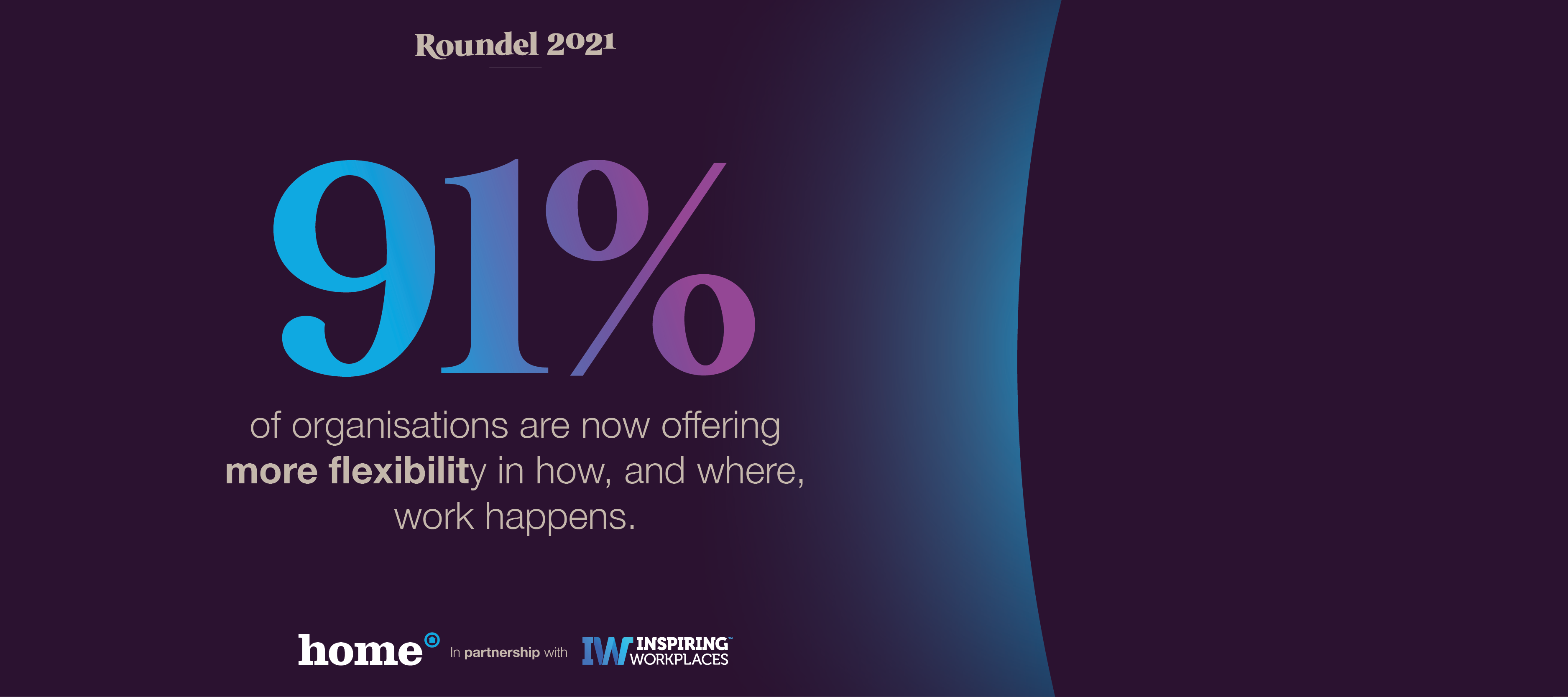It’s time for the third in our series of posts dedicated to the results of Roundel 2021, our in-depth report on global employee experience trends. Since the backdrop to our research was a year of seismic change punctuated by remote working, Zooming and home schooling, it’s no surprise that one of the key themes to emerge was flexibility.
The topic of flex working has been trending for some time, but the pandemic has finally proved that yes, we can do it…and it works! Our data shows that that 91% of organisations are now offering more flexibility in how, and where, things get done with 60% of employees actually working remotely. This has proved to be a lifeline for those juggling multiple responsibilities, but it’s also been a win for businesses…increased flexibility saw on average 24% more of a positive impact across productivity, innovation, empowerment, engagement and culture. Importantly, 8/10 organisations say flexibility hasn’t hurt their business.
The flipside…
Of course, this giant work from home experiment hasn’t always been easy. For example, here at Home, we’re really missing seeing our colleagues face-to-face (and our famous Wednesday lunches!). We asked our respondents which of their employee experience touchpoints were most impacted by remote working and discovered Learning & Development was hardest hit (22%) followed by Recruitment and Onboarding (both with 18%).
We’re well aware that making remote working happen in the first place took huge amounts of energy and innovation. Now that’s in place, organisations need to make sure that each stage of the employee lifecycle is starting to receive the same (or more!) TLC than it did before.
Five tips for creating a more flexible employee experience
The initial panic of the pandemic has subsided, and we have everything crossed that we’re coming out the other side. The time has come for businesses to consider what their world of work will look like in the longer term. We’ve all come too far on this journey to go back now! Here are five things to think about…
1. Listen
Your people have been through a lot. So, if you haven’t done this already, it’s important to listen to the highs and lows they’ve experienced through the pandemic. Build a picture of what’s important to them and how and where they would like to work moving forward. Only then can you truly assess what suits individuals, teams, your business and your customers, to try to find the sweet spot in the middle.
2. Set out your intention
Listening without action does more harm than good so show people that you’ve heard them. Talk to them about how you’re evolving your employee experience based on their feedback – but remember to keep it realistic. Don’t be afraid to trial things like a compressed work week or core hours/flexitime to help establish if they’re right for your organisation. It’s not about doing everything for everyone at once, but about developing a powerful phased approach that will be sustainable moving forward.
3. Consider your line managers
Your line managers are key to the success of a more flexible employee experience. For starters, their actions (such as sending emails or calling employees during time off) will impact on whether your people feel they are genuinely empowered to avail of options such as core hours. So, they need to be encouraged to set an example.
They also need support. For example, if you’re moving towards a more permanent home working model, make sure that you offer a training programme to set the standard of what remote team leadership looks like. You can also equip them for what to look out for when people are struggling and how to approach mental health in the workplace (watch out for more on this in our next blog).
4. Get techy
Great tech is central to a more flexible employee experience strategy. Let’s start with the basics…people need to have the right kit to be able to do their jobs effectively both inside and outside of the office. Secondly, collaboration and co-creation tools can make life easier and boost productivity so make sure that you’re putting what you already have to work. And finally, tech can help to bring your culture to life virtually – giving people platforms to build community, recognise one another and have their voices heard.
5. Review and refine
Our Roundel research highlighted that 14% of organisations don’t have a formal listening strategy and only 2/3 of organisations used listening channels in 2020 – so we’re on a mission to make sure that’s 3/3 in 2021! You need to have a constant conversation with your people to ensure that any changes you introduce are working and actually making your employee experience more flexible. Monthly reviews and adjustments will demonstrate that you’re being agile and acting on what they’re asking for. Although it might seem simple, this tip is probably the most important of all!
And finally…
Our fourth and final blog based on the employee experience insights from Roundel 2021 is coming soon. In the meantime, you can download the full report, for free, here.





 Back to all
Back to all

